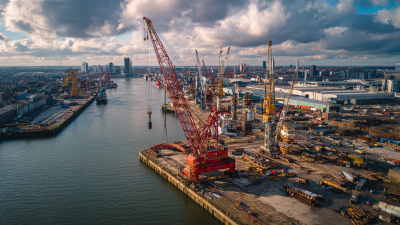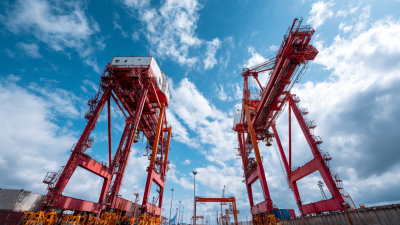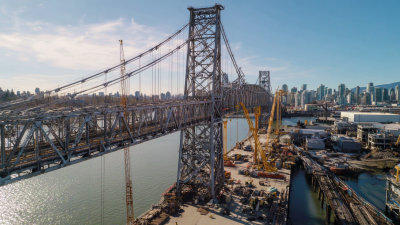Inquiry
Form loading...
-
Phone
-
Wechat

-
Whatsapp

In the realm of industrial material handling, the Overhead Bridge Crane has emerged as a game-changing solution, transforming the way businesses manage heavy loads and streamline operations. This sophisticated piece of equipment offers unparalleled efficiency and versatility, allowing for the seamless movement of materials across vast workspaces. The integration of advanced technology and innovative design has positioned the Overhead Bridge Crane at the forefront of modern manufacturing and logistics, enabling companies to optimize workflows, enhance safety, and reduce labor costs. As industries continue to evolve, understanding the operational advantages and applications of Overhead Bridge Cranes becomes increasingly vital. In this exploration, we will delve into the significant impact these cranes have on industrial efficiency, examining their features, benefits, and how they contribute to a more productive and safe working environment.

Overhead bridge cranes are essential for efficient material handling in various industrial settings. These cranes consist of several key components, including the bridge, trolley, hoist, and end trucks. The bridge spans the workspace, while the trolley moves horizontally along the bridge to lift and transport materials. The hoist, typically mounted on the trolley, is responsible for raising and lowering the load. End trucks, which are located at either end of the bridge, provide mobility and stability by allowing the crane to move along fixed tracks.
Each component plays a vital role in ensuring smooth operation and safety during lifting tasks. The design of the bridge crane allows for maximized vertical space, which is particularly useful in warehouses and manufacturing facilities where floor space is at a premium. Furthermore, overhead bridge cranes can handle heavy loads with ease, reducing the risk of workplace injuries associated with manual lifting. By integrating advanced technology, such as automated controls and load sensors, these cranes enhance efficiency, accuracy, and safety in material handling processes.
Overhead bridge cranes are an essential component in modern industrial environments, enhancing not only efficiency but also safety. One of the key advantages of these cranes is their ability to streamline material handling processes, significantly reducing the risk of workplace accidents. By lifting heavy loads with precision, they minimize the need for manual lifting, which is often a common cause of injuries. The design of overhead bridge cranes allows operators to have a clear view of their surroundings, further increasing awareness and reducing the likelihood of collisions.
**Tips:** When using overhead bridge cranes, it’s crucial to always adhere to safety protocols. Ensure that operators are trained and certified in crane operation, and conduct regular inspections and maintenance on the equipment to prevent malfunctions. Additionally, using a spotter can enhance communication and safety, particularly in busy environments.
Implementing proper safety measures related to overhead bridge cranes not only protects the workforce but also contributes to a more productive industrial setting. Clear signage, weight limits, and designated paths for crane operation can effectively minimize hazards. Adopting these strategies allows businesses to harness the full potential of overhead bridge cranes while maintaining a secure work environment for all employees.
| Feature | Description | Safety Enhancements | Efficiency Gains |
|---|---|---|---|
| Load Capacity | Ranges from 1 ton to over 100 tons depending on model. | Reduces risk of load drops with advanced load monitoring systems. | Increases throughput in material handling operations. |
| Control Systems | Can be manual, semi-automated, or fully automated. | Features emergency stop functions to enhance worker safety. | Streamlines operations with precision control, minimizing handling time. |
| Span Length | Customizable span lengths to fit specific facility layouts. | Maximizes lifting area while maintaining a clear working space. | Allows for handling of goods in large facilities without obstruction. |
| Materials Used | Constructed from high-strength steel for durability. | Less wear and tear on equipment reduces failure risks during lifting. | Longevity of equipment contributes to decreased downtime. |
| Maintenance Requirements | Routine inspections and servicing are necessary to ensure safety. | Regular maintenance checks prevent accidents caused by equipment failure. | Planned maintenance increases operational reliability over time. |
Overhead bridge cranes play a crucial role in enhancing operational efficiency within industrial environments. By providing a versatile and dynamic method for moving heavy loads, these cranes significantly reduce the time and labor required for material handling. Their ability to traverse along a defined path allows for seamless transportation of items across the workspace, optimizing workflow and minimizing downtime. This direct movement reduces the need for manual lifting, thereby lowering the risk of worker injuries and ensuring a safer work environment.
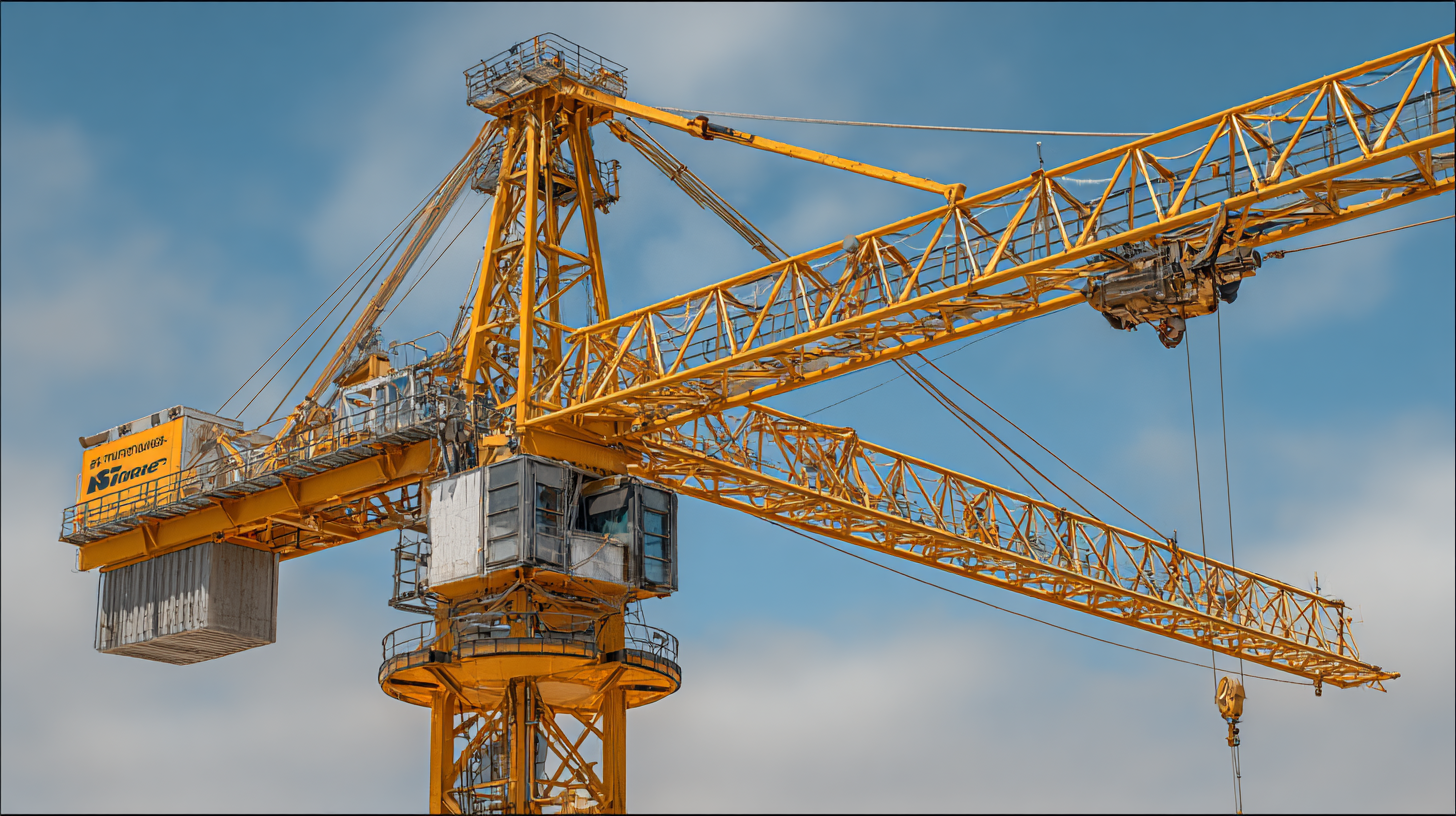
Moreover, the precise control that overhead bridge cranes offer enables operators to handle complex material movements with accuracy. This is particularly beneficial in manufacturing and warehousing applications where space is limited, and efficiency is paramount. By allowing simultaneous operations across different areas of the facility, these cranes streamline processes, contributing to enhanced productivity. The integration of modern technology, such as automated controls and load monitoring systems, further amplifies their effectiveness, ensuring that businesses can adapt to the demands of a fast-paced industrial landscape.
Maintenance is crucial for maximizing the lifespan of overhead bridge cranes, which are essential in material handling across various industries. According to the Material Handling Industry of America, regular maintenance can increase the operational lifespan of cranes by up to 25%. A comprehensive maintenance program typically includes routine inspections, lubrication of moving parts, and prompt repairs of any identified issues. Additionally, following the manufacturer's recommended maintenance schedule is vital for ensuring peak performance and safety.
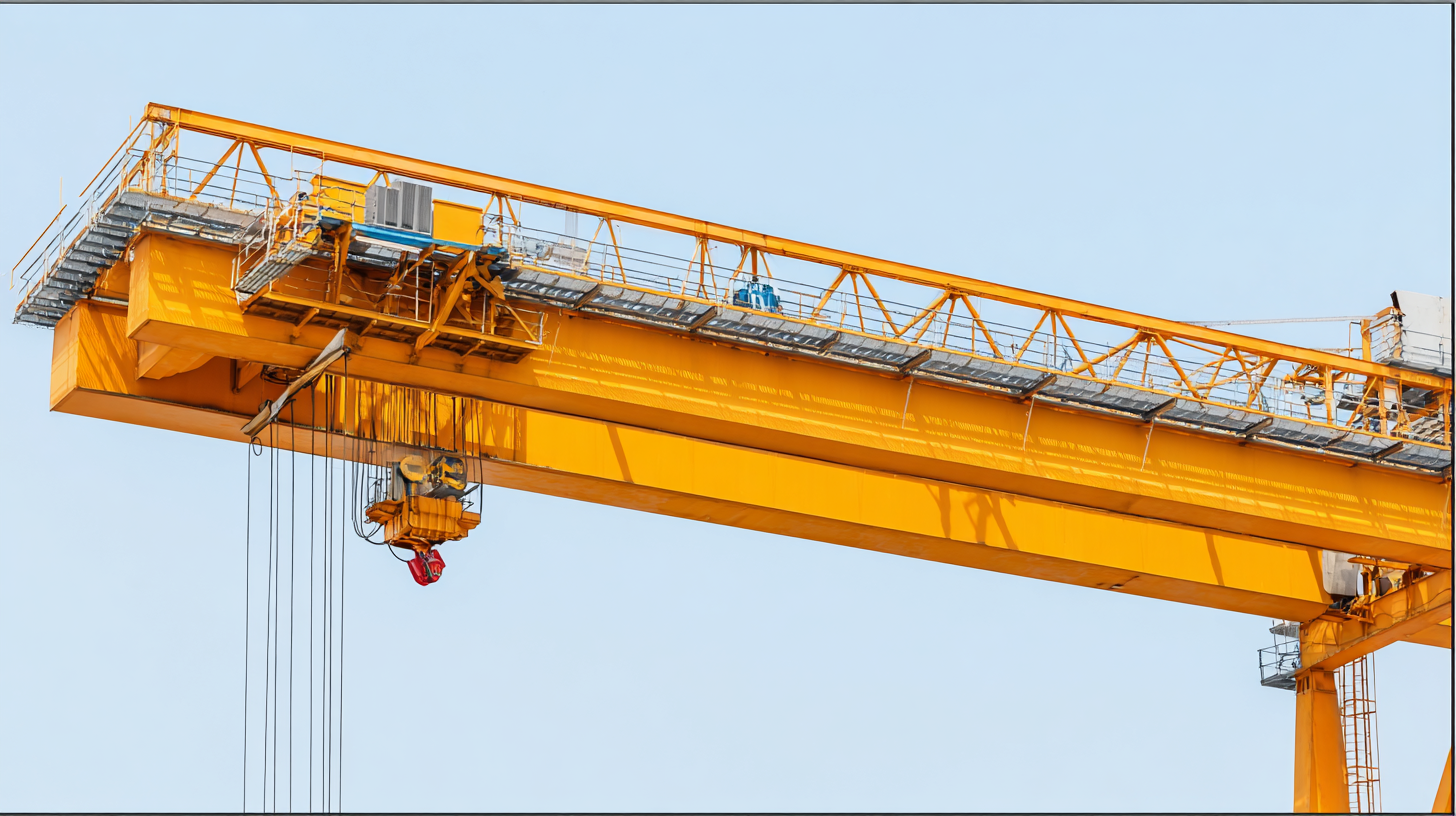 Another essential aspect of maintenance involves monitoring wear and tear on critical components such as cables, hoists, and bearings. The American National Standards Institute (ANSI) recommends that operators inspect these components at least once per month. Implementing predictive maintenance practices, such as utilizing sensors to track equipment performance, can also help identify potential problems before they lead to costly downtime. This proactive approach not only enhances the efficiency of overhead bridge cranes but can also extend their operational life significantly, leading to reduced replacement costs and improved safety in the workplace.
Another essential aspect of maintenance involves monitoring wear and tear on critical components such as cables, hoists, and bearings. The American National Standards Institute (ANSI) recommends that operators inspect these components at least once per month. Implementing predictive maintenance practices, such as utilizing sensors to track equipment performance, can also help identify potential problems before they lead to costly downtime. This proactive approach not only enhances the efficiency of overhead bridge cranes but can also extend their operational life significantly, leading to reduced replacement costs and improved safety in the workplace.
The future of overhead bridge crane technology is poised for remarkable advancements driven by automation and smart integration. As industries seek to enhance productivity and safety, the adoption of IoT (Internet of Things) technology in crane systems is becoming increasingly prevalent. This integration allows for real-time monitoring of crane operations, providing valuable data that can be used for predictive maintenance, thereby reducing downtime and operational costs. With the help of AI algorithms, cranes can also optimize load handling, ensuring that the right capacity and efficiency are delivered for various industrial applications.
Moreover, the trend towards increased automation in material handling is fostering the development of autonomous overhead cranes capable of navigating complex environments with minimal human intervention. These smart cranes can communicate with other machines and systems within a facility, streamlining workflows and improving overall efficiency. Additionally, innovations in materials and design are making cranes lighter, more energy-efficient, and easier to install, which helps businesses adapt to rapidly changing market demands. As these technologies evolve, overhead bridge cranes will not only revolutionize material handling but also set new standards for safety and efficiency in industrial environments.
